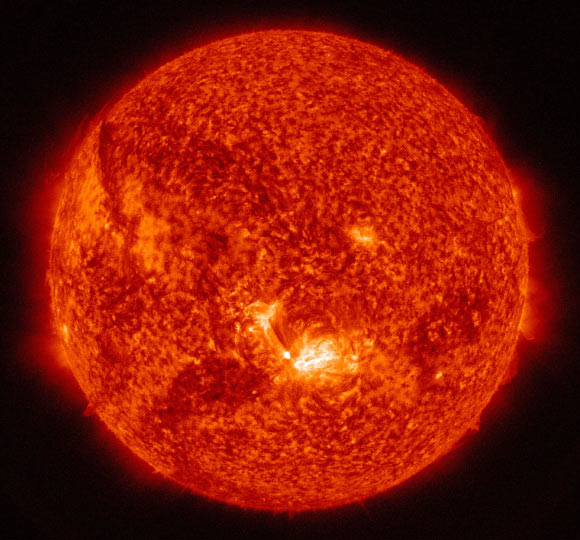NASA’s Solar Dynamics Observatory (SDO) captured this stunning ultraviolet image of a powerful solar flare – as seen in the bright spot in the lower center of the Sun’s disk – at 3:33 a.m. EDT (7:33 a.m. GMT) on August 24, 2015.

This SDO image shows a subset of extreme UV light that highlights the extremely hot solar material, which is typically colorized in red. Image credit: NASA / SDO.
Solar flares are brief, huge outbursts of electromagnetic radiation from the Sun lasting from minutes to hours.
These events produce enhanced emission in all wavelengths across the electromagnetic spectrum, including radio, optical, UV, X- and gamma-rays.
Harmful radiation from solar flares pass through Earth’s atmosphere to physically affect humans on the ground, however, they can disturb the atmosphere in the layer where GPS and communications signals travel.
Scientists classify solar flares according to their brightness in the X-ray wavelengths.
There are three categories of solar flares: C, M, and X.
The August 24 event is classified as an M 5.6 class flare (M2 is twice as intense as an M1, an M3 is three times as intense, etc).
M-class flares are medium-sized; they generally cause brief radio blackouts that affect the polar regions of our planet.
Minor radiation storms sometimes follow an M-class flare.







